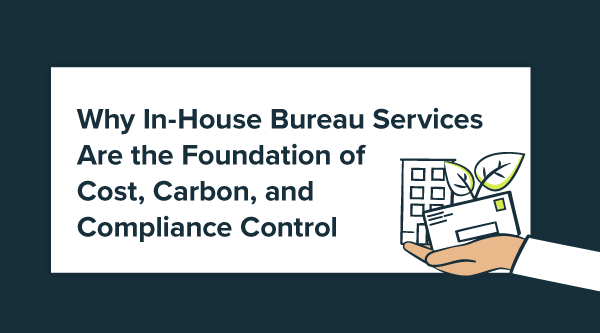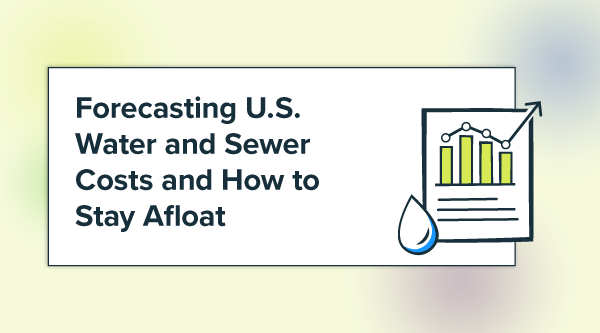How Much Will You Save with an Energy Management Information System?
Expected return-on-investment (ROI) is a critical component of most large capital purchase requests. Energy management information systems (EMIS) are no exception.
Implementing a comprehensive EMIS requires a substantial investment of monetary and labor resources, and it may take a year (or longer) before benefits are documented. But rest assured, benefits will be realized.
How much money you will save depends on many factors: how well you are currently managing utility accounts; how much emphasis and resources senior management has applied (and will apply) to energy management; and what tariff and energy supply alternatives are available. That said, it is common for first-year savings and cost recoveries to exceed 1% of the user’s total annual utility budget, and dollar savings tell a good story.
{{cta(‘9fc7d517-5626-4735-bd04-7cba719ef92d’,’justifycenter’)}}
Feedback from EnergyCAP users shows near-term savings in the following areas:
- Account ownership. It is common for organizations to, upon implementing an EMIS, discover that they are paying for utility accounts that they do not own or were supposed to have been closed. Putting an exact dollar amount on this can be difficult, but the savings can be substantial. One client reported they were paying approximately $500,000 per year for an account they did not own. This provided an immediate savings and more than covered the cost to license and implement the EMIS.
- Bill processing. Experts estimate that the cost to process and pay one utility bill is $10-$20, when labor, IT, equipment, and postage costs are accounted for. The total cost to implement the EnergyCAP EMIS is approximately 25% of that amount, when analyzed on a per-bill basis. Outsourced utility bill processing is often much less expensive, frees your staff to focus on higher-value tasks, and is less likely to be impacted by international pandemics.
- IT costs. When evaluating the cost of implementing and hosting an EMIS, IT costs are commonly underestimated. Software license and hardware costs to support a system are substantial. Then there are labor costs for setting up and maintaining the hardware and software. The fee for outsourced application hosting is usually a fraction of self-hosting costs, plus it typically includes increased data security, application upgrades, and technical support.
- Identifying billing issues. The most common source of savings is EMIS-identified billing errors. Utility companies are not perfect, and mistakes do happen. All too often, accounting personnel prioritize on-time payment over verifying a bill’s accuracy. An EMIS can analyze and evaluate usage, demand, rate schedule appropriateness, and other values that accounting systems cannot. This results in a deeper level of checking to ensure bills are accurate before they are paid.
- Streamlined reporting & compliance. Many state and local governments have mandated energy use reductions or ENERGY STAR benchmarking submissions. Imagine being able to press “the easy button” so compliance requirements are met in minutes, without weeks or months of labor-intensive data gathering, validation, and submission.
- IPMVP-compliant savings calculations. Cost savings are typically the primary driver behind retrofits and other energy management projects. Using an IPMVP-compliant EMIS to calculate and report avoided costs confirms your successes. EnergyCAP EMIS users have documented billions of dollars of avoided costs resulting from energy use reduction initiatives. Many have reported year-over-year avoided costs of 20% or more.
- Better management. Implementing an EMIS can result in the elimination of utility bill late fees and other invoice payment issues, along with the proper handling of cancelled bills and rebills, and accurate accounting of deregulated accounts.
Before your actual monetary savings and payback period can be determined, one fact is clear: you need to get a firm handle on your energy information. Energy information management provides the foundation upon which all further utility bill accounting and energy management initiatives are built. A firm foundation also tells a good story. But together, dollar savings and a firm foundation tell a great story.
We’ve assembled some EMIS success stories into a Field Guide with, not coincidentally, the same title as this blog article. I encourage you download the Guide to read real-life EMIS success stories from organizations like yours. And if you would like to write your own EMIS success story, please contact us to learn more about our EnergyCAP software-based solution.
Best-in-class portfolio-level energy and utility bill data management and reporting.
Real-time energy and sustainability analytics for high-performance, net-zero buildings.
A holistic view of financial-grade scope 1, 2, and 3 carbon emissions data across your entire business.
Energy and sustainability benchmarking compliance software designed for utilities.






